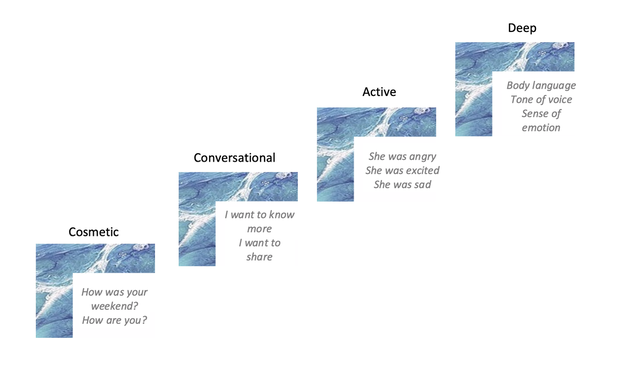|
By Lucy Mullins. The story starts with tennis coaches and ski instructors… In the 1970s, tennis expert and Harvard educationalist, Timothy Gallwey, shook up the world of sports coaching with his book “The Inner Game of Tennis”. In his words, the core idea of the book is “the opponent within one’s own head is more formidable than the one the other side of the net”. He claimed that if a coach can help a player remove or reduce the internal obstacle to their performance, there will be much less need for technical input from the coach. At the time this was pretty controversial, to be a tennis coach surely you need to have the technical expertise and ability yourself to be able to develop another player? It turns out not, and this is very exciting for the business world and possibilities for using coaching techniques as leaders, managers and team members. There are many situations in which you will be leading, managing or working with people where you have no experience or knowledge of the technical or detailed nature of their work. You cannot advise them or tell them what to do because you don’t know. This is excellent. You’ll be able to help them a lot more. You can coach them… The essential belief underlying the art and science of coaching is that people have the capability to develop, change, and solve their own challenges. People have all the resources required within them. A coach is there to facilitate the brain’s exploration of possibilities and unlock these internal resources. In the words of the man considered to be the pioneer of coaching in organisations, Sir John Whitmore, “Coaching is unlocking a person’s potential to maximse their own performance. It is about helping them to learn rather than teaching them”. So, without any detailed knowledge of maths, law or finance, it’s possible to successfully coach mathematicians, lawyers and bankers. This is a wonderful skill when you are leading, managing and working with people whose professional and technical expertise might be a mystery to you, but you still need to be able to motivate and support them. Think of coaching as facilitating somebody’s thinking process. To do this you need to do two key things: listen and ask questions. Great. Tick. Tick. I listen and ask questions every day Lucy, let’s move on. No, first let me ask you a question… when was the last time somebody listened to you? I don’t mean just listening to respond to a question, I mean really listened to you. And another question… when was the last time you really listened? The image below shows different levels of listening from cosmetic to deep listening. An example of cosmetic listening is the morning pleasantries as people arrive in the office, there is nodding, um and ahhing but the person listening is probably still checking their phone, or thinking about what they have to get done that day.  Moving to a conversational level of listening starts to engage the brain as questions are asked in response to answers. This is probably the most common form of listening and certainly has an important role, but consider that when you are in conversation what Mr Stephen '7 Habits of Highly Effective People' Covey said, “most people do not listen with the intent to understand; they listen with the intent to reply”. Consider this the next time you have a conversation and try to really hear what is being said rather than thinking about how you are going to respond. You’ll be amazed at the powerful impact this can have on the person being listened to. It will deepen the relationship and trust, and you’ll find out a lot more about what is going on in their life. You’ll then be actively listening - Congratulations! This is a scarce skill! At the deepest level of listening, which is sometimes called empathic listening, you are listening to not only understand, you are “listening” for non-verbal communication such as body language, tone of voice, and the underlying sense of emotion. Sometimes excellent listening is enough, but sometimes you need to do a bit more to help people unlock ideas or open up new possibilities. You can do this by asking questions… but not any old questions. What makes a great question?The answer is that it really depends on the context. It takes practice and experimentation to find the right questions, and the same question will resonate differently with different people in different situations. But here are a few simple guidelines to help your ask better questions… 1) Avoid yes/ no questions By using an open-ended questions you get insights and additional information you might not have known existed. Questions with “would,” “should,” “is,” “are,” and “do you think” all lead to yes or no. Questions with “who,” “what,” “where,” “when,” “how,” or “why” lead to people giving some thought to their answers and provide much more information. For example: “Does that feel ok?” could be asked as “How do you feel about that?” 2) Exploratory questions Don't accept the first answer. Be curious and dig deeper with follow-up questions... For example: “What makes you say that?”, "What do you think is going on?", "How do you know that to be true?", "What's the evidence?", "What else?"... 3) Frame questions is a positive way For example: “What do you think is leading to you missing deadlines?” could be asked as “What could you do to help you meet your deadline? “ But remember the most important part of asking a good question… Waiting patiently for the answer, and not interrupting. Don't be afraid of silence. So, after all those questions, here’s an important one to ask yourself… WHY do I need to know about coaching? Embracing a coaching approach can enhance your personal and professional relationships. As a manager or leader of people, working with the principles of coaching you get a two for one deal – you get the job done to a higher standard by giving the person responsibility, and you develop your team at the same time. We live in a VUCA[1] world and in this age of data proliferation are constantly facing cognitive overload. The most common answer to the question “How are you?” seems to be “busy”. Taking time to ask people questions and listen, and giving people time to think isn’t a luxury, it’s essential for productivity, performance and wellbeing. After this brief introduction to coaching I hope you feel inspired to try it out, and excited about the impact it could have on you and the people you interact with. *** Hang on Lucy, at the start of this blog you promised me ski instructors… Yes I did, and I think this is a lovely story to summarise the power of coaching and help you feel empowered to start trying out some of the techniques I’ve outline above. Our friend from the start, Timothy Gallwey, was running a series of very successful tennis, skiing and golf coaching programmes based on his “Inner Game” series of books. On one of his tennis courses he didn’t have enough coaches, so he dressed two of the skiing experts in tennis whites and put a racket in their hand with the instruction not to use the racket under any circumstances! The quality of the coaching between the ski and tennis experts was indistinguishable, except on a few occasions when the ski experts outperformed the tennis experts at coaching tennis. Yes, that’s right, the ski instructors were better at coaching tennis than the tennis experts, despite never having hit a tennis ball before! From what we’ve discussed about the nature of coaching, this shouldn’t be a huge surprise. So, open your ears, listen deeply, believe in people, ask powerful questions and give yourself and those around you time to think. You might be amazed at what happens. ______ [1] Volatile, Uncertain, Complex & Ambiguous
0 Comments
Leave a Reply. |
AuthorsLucy & Sonya, Co-Founders and Course Directors of #RideTheWave. |
what we offer
|
Company |
|

